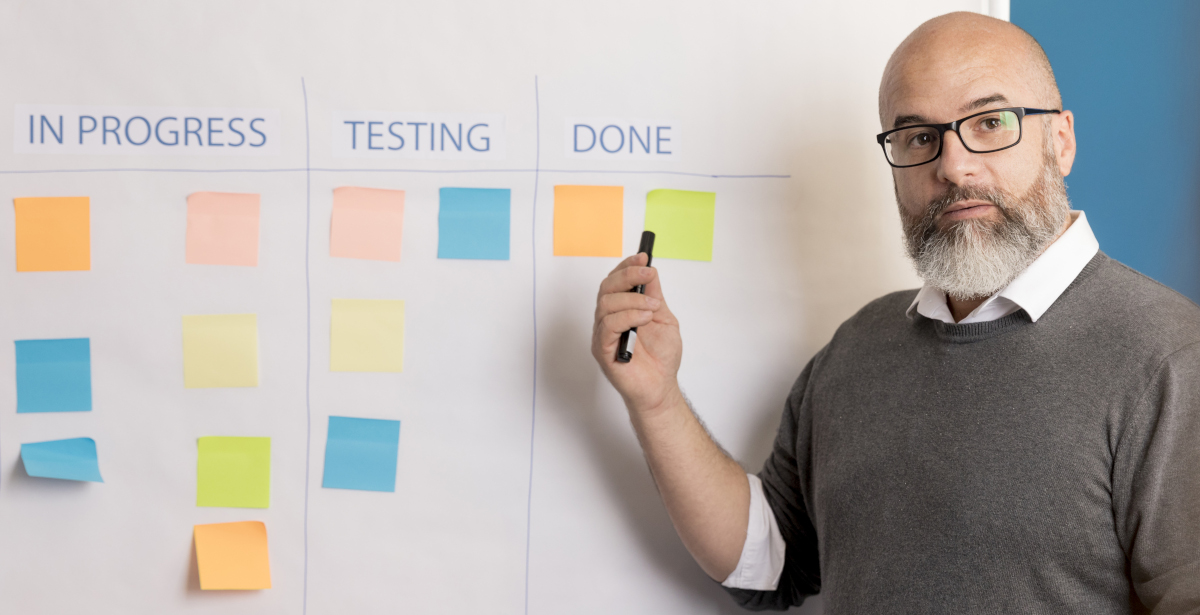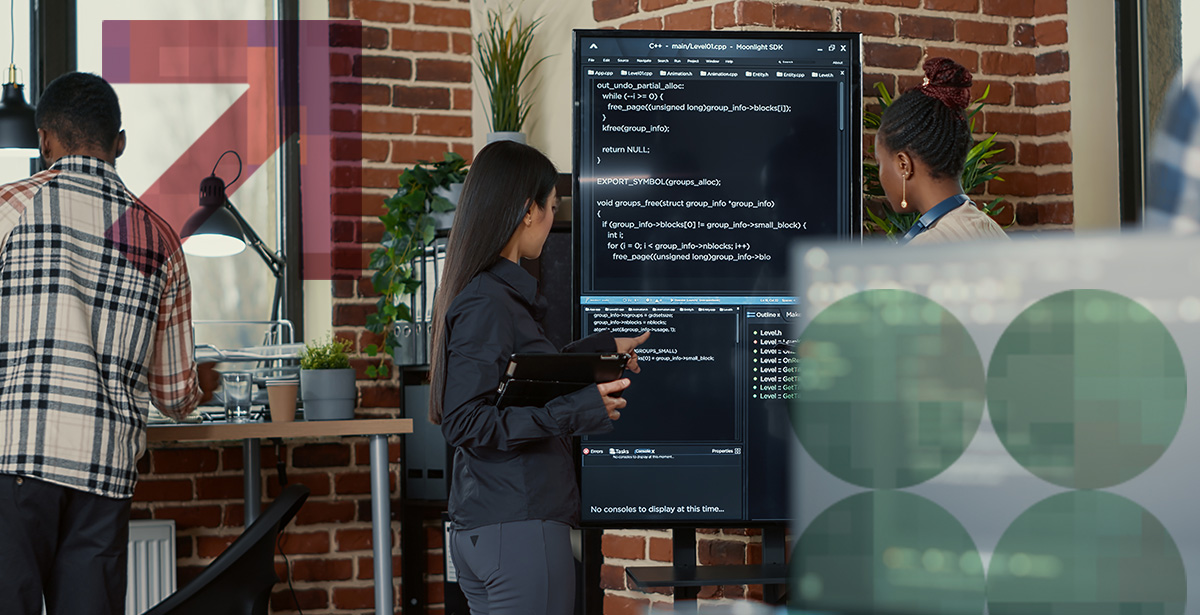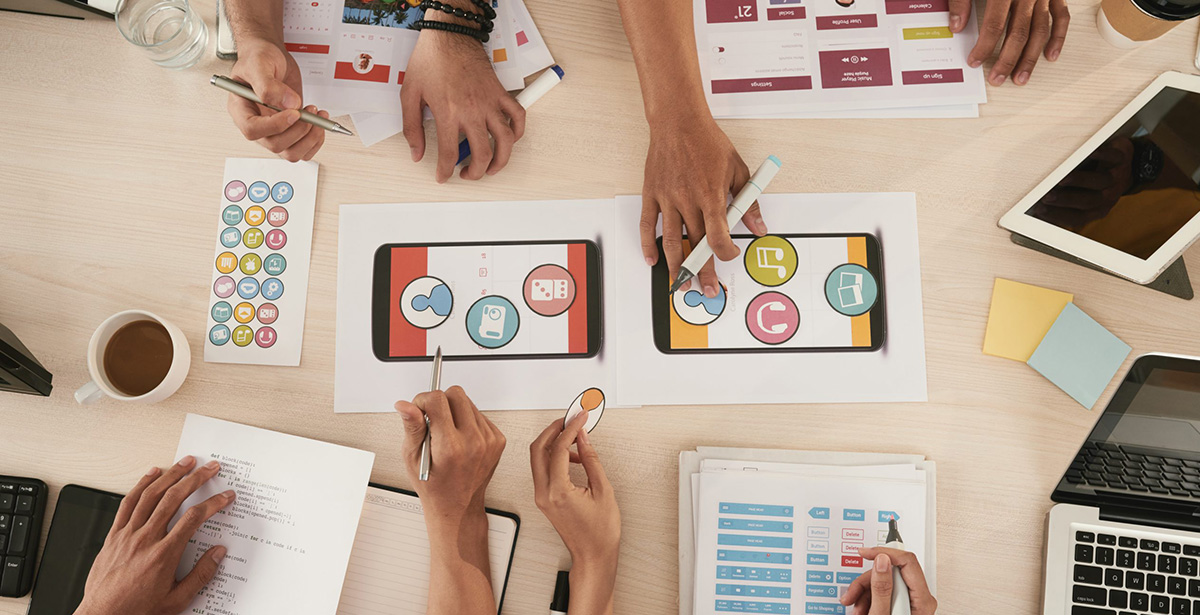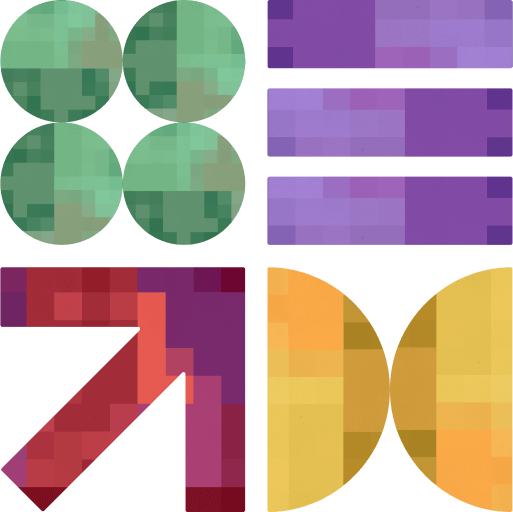The Ultimate Guide on Design Sprint Phases

Understanding design sprint phases is a must. Especially considering their role in business agility.
In addition to better navigating complexity, this forward-thinking approach equips teams to swiftly identify and validate innovative solutions in digital product development.
If this piques your interest, find out about what these are in the lines below.
What Are Design Sprints?
Design sprints are structured workshops designed to tackle product development challenges while testing solutions with real users.
This method enables teams to convert ideas into tangible solutions. Moreover, it accelerates development and minimizes the risk of failure by gathering user feedback in real time.
Typically, design sprint phases bring together several participants—designers, developers, product managers, and key stakeholders, ensuring a holistic approach to problem-solving.
Resulting in a prototype that’ll be tested by real users, the process lays a solid foundation for future success.
Design Sprints vs. Design Thinking
Design sprints and design thinking both drive innovation by putting the user first. However, each has its own playbook and pace.
Design thinking is a broad, human-centered methodology focused on empathy, creativity, and constant iteration. It guides teams through stages like empathizing, defining, ideating, prototyping, and testing to unlock creative solutions for complex, open-ended problems.
Design sprints, by contrast, are laser-focused on speed and validation. Created by Google Ventures, they address a specific problem, moving from understanding to testing a solution within just five days. This compresses months of work into one compact sprint.
Both approaches center on the user but serve distinct roles in the design process:
- Design thinking offers an iterative framework suitable for larger, exploratory projects. Meanwhile, design sprints are time-bound, making them ideal for well-defined problems requiring rapid solutions.
- While design thinking encourages ongoing innovation and exploration, design sprints provide intense focus. this results in actionable insights almost instantly.
- Design thinking fosters creative exploration, while design Sprints are the agile toolkit for quick, decisive validation.
The Benefits of Design Sprints
If you’re wondering what committing to design sprint phases for a few days can do, here’s a quick look at the benefits of the phases of design sprints.
Simple Solutions for Complex Challenges
Design sprints keep the focus sharp. In just five days, a team can focus on a common goal, identify pain points, and brainstorm actionable solutions. By the end, assumptions are tested, and solutions are ready—no lengthy back-and-forth.
Speed That Outpaces Bureaucracy
Speed isn’t a luxury; it’s essential. Design sprints are designed to move fast. So, complex ideas can transform into tested products in days rather than months. This, in turn, gives you an edge since you can reduce your time-to-market.
Smaller Risk, Bigger Validation
Companies like Google and Airbnb use design sprints to minimize costly errors and make better, faster decisions. The working prototype or minimum viable product created by the end of a sprint helps validate ideas by collecting users’ feedback before investing heavily in development.
Increased Team Collaboration
Forget siloed teams and endless email threads. Design sprints bring everyone to the table—designers, developers, and managers. By aligning diverse perspectives, you achieve holistic, actionable solutions with fewer misunderstandings and faster results.
User-Centered Validation for Real Market Fit
This approach focuses on building empathy with real customers, shaping products that meet market needs. Airbnb’s leap from startup to global brand began with a user-focused design sprint. Users win, and so do you.
Clear Vision with Measurable Progress
Setting goals is one thing; tracking them is another. Design sprints offer a framework like V2MOM (Vision, Values, Methods, Obstacles, Metrics) to align teams on a clear path. That way, everyone knows what success looks like and how to achieve it.
Continuously Evolving Solutions
Product development is ever-changing. Thankfully, design sprint phases keep you adaptive, iterating on what works and fixing what doesn’t. You can say they help you spot bottlenecks and streamline processes, whether in tech, management, or bureaucracy.
Efficiency in Internal Workflows
With design sprint exercises, you can quickly identify inefficiencies and brainstorm solutions. Automation, A/B tests, and time-saving tools arise from these sessions, boosting productivity.
Improved Collaboration Across Teams
Adhering to design sprint phases fosters teamwork and uncovers communication issues between departments. Marketing, product, and R&D can then collaborate to create products that resonate with users.
The Five Design Sprint Phases
Design sprints deconstruct the journey from ‘problem’ to ‘solution’ into five distinct phases, each with a specific focus and set of tools. Here’s a breakdown of the important phases of the design sprint process;
Phase 1) Understanding the Problem
The design sprint phases begin with a planning phase where the team identifies the sprint’s core focus and outlines the workshop plan. This customer-centric approach starts by pinpointing users’ pain points and needs, establishing the sprint’s foundation.
Additionally, it’s crucial to identify technologies that can help achieve desired outcomes. Breaking the final goal into several milestones clarifies the team’s action plan.
Key Tools:
- Sprint Backlog – This acts as the project map, detailing key tasks and goals to ensure alignment.
- Empathy Map – This helps visualize users’ emotions and expectations, connecting the team with the target audience.
- Stakeholder Map – With the help of this tool, the team can focus on client expectations.
Phase 2) Looking for Solutions
With a clear understanding of the problem, the next phase involves brainstorming potential solutions. Teams explore options, weighing their pros and cons to identify the best fit.
At this stage, creating demos and sketches facilitates effective brainstorming. For complex projects, deeper user research techniques like customer journey maps may be necessary. However, simpler projects can proceed without them.
Key Tools:
- Customer Journey Map – With the help of the customer journey map, you can identify user interactions and areas for improvement in the product.
- Solutions Sketching – Jotting down ideas and sketches helps teams transition from theory to actionable insights.
Phase 3) Making a Decision
After generating a range of solutions, the team enters the decision-making phase. Members evaluate options and compare them to select the most viable solutions for implementation.
The goal of this phase is to identify effective solutions and outline the product’s future architecture. That way, the team can agree on a direction moving forward.
Key Tools:
- User Story Maps – This tool effectively visualizes customer journeys, clarifying how well each solution functions.
- Critiquing and Voting – Team critiques and votes on solutions help narrow down the best options.
Phase 4) Creating UI/UX Design
In this phase, the focus shifts to building the UI/UX design based on the selected solutions. The goal is to create a design that includes essential functions for effective testing against initial concepts.
Using tools like Figma or Sketch enables teams to work efficiently and create prototypes for testing, even in short design sprints.
Key Tools:
- Professional Design Tools – These are critical for verifying product features and alignment with user needs.
Phase 5) Validating the Design
Finally, the sprint concludes with validating the design’s effectiveness and alignment with the objectives set in the backlog.
The product owner typically conducts this review, making crucial decisions on the design’s future. For complex products, involving real users for feedback and market analysis can provide invaluable insights.
Key Tools:
- Retrospective Meeting – During the meeting, teams reflect on the sprint, identifying successes and areas for improvement. This, in turn, ensures that lessons learned are applied to future sprints.
Have an Idea That You Need to Design and Develop?
DPL provides such custom software development services and has the right people to take your idea off the design board and bring it to life.
Fill out the form below to discuss how we can work together on your next project. Your next breakthrough is just a conversation away, let’s get started!





